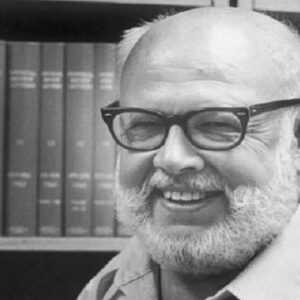William Alfred Fowler was a nuclear scientist and astrophysicist from the United States. He and Subrahmanyan Chandrashekhar were awarded the 1983 Nobel Prize in Physics jointly. Fowler was awarded the Nobel Prize for his theoretical and experimental research on the nuclear reactions crucial to the synthesis of chemical components in the cosmos. He was born in Pittsburgh, Pennsylvania, but he grew up in Lima, Ohio, after his father was relocated to the latter city. Since his high school years, he has demonstrated an aptitude for the sciences and engineering. He initially intended to study ceramic engineering at the Ohio State University, but his growing interest in physics led him to change his major to engineering physics. Subsequently, he attended the prestigious California Institute of Technology, where he received his Ph.D. and remained affiliated for most of his academic career. During the Second World War, he served as an assistant professor and subsequently a full professor at the California Institute of Technology, as well as in a non-military capacity for the army.
Youth and Early Life
William Alfred Fowler was born on August 9, 1911, in Pittsburgh, Pennsylvania, the United States to John Macleod Fowler and Jenni Summers Watson Fowler. His father worked as a certified public accountant. William had two younger siblings: a brother and a sister.
Due to his father’s transfer, his family relocated to the Ohio city of Lima, where he grew up. Initially attending Horace Mann Elementary School, he went on to graduate from Lima Central High School in 1929. Early on in school, he showed an interest in the sciences and engineering.
After completing high school, he enrolled at Ohio State University to study ceramic engineering. His interest in physics, however, led him to switch to engineering physics. Following his graduation from Ohio State University in 1933, he continued his schooling at the California Institute of Technology. In 1936, he got his doctorate in nuclear physics from the same institute.
William Alfred’s Career
William Alfred Fowler was employed as an associate professor at the California Institute of Technology in 1939, where he studied the nuclear reactions of the protons of carbon and nitrogen isotopes after earning his Ph.D. from the institute. Hans Bethe’s discovery of the CN cycle prompted the start of the experiments.
During the height of the Second World War, the Kellogg Laboratory at the California Institute of Technology was donated for military research. In 1944, Fowler was dispatched to the South Pacific to help American forces, and he spent three months there is a civilian position. Two years later, the California Institute of Technology made him a full professor.
The study ‘Synthesis of the Elements in Stars,’ which he co-authored with Fred Hoyle, Margaret Burbidge, and Geoffrey Burbidge, was one of his most renowned contributions to experimental physics. The 1957 publication proposed that the process of elemental synthesis in stars begins with the synthesis of lighter elements.
Afterward, he was appointed director of the Kellogg Laboratory at the California Institute of Technology. In addition to his work on element generation, he conducted radio astronomy research with Fred Hoyle at the University of Cambridge’s Institute of Theoretical Physics, which was founded in 1966. He continued to work concurrently at Kellogg Laboratory.
His most significant accomplishment as a scientist was a lengthy investigation of nuclear reactions and elemental formation undertaken at the Kellogg Laboratory of the California Institute of Technology. In 1983, his theories on elemental generation earned him the Nobel Prize, which he shared with Subrahmanyan Chandrashekhar, who had independently studied the same topic.
His Notable Works
His theoretical and experimental studies of the nuclear reactions important in the synthesis of the chemical constituents of the cosmos were his most significant contribution.
Honors & Accomplishments
In 1965, he received the Barnard Medal for Meritorious Service to Science.
He was given the Vetlesen Prize in 1973.
In 1974, he was awarded the National Medal of Science.
He shared the Nobel Prize for Physics with Subrahmanyan Chandrasekhar in 1983. Fowler was honored “for his theoretical and experimental research of the nuclear reactions crucial to the synthesis of the universe’s chemical elements.”
Personal History and Legacy
He wedded Adriane Foy Olmsted on August 24, 1940. Mary and Martha were the names of the couple’s daughters.
William Alfred Fowler died of kidney failure on 14 March 1995 at the age of 83 in Pasadena, California.
Estimated Net worth
William is one of the wealthiest and most well-known astronomers in the world. According to our research, Wikipedia, Forbes, and Business Insider, William Fowler has an estimated net worth of $1.5 million.


